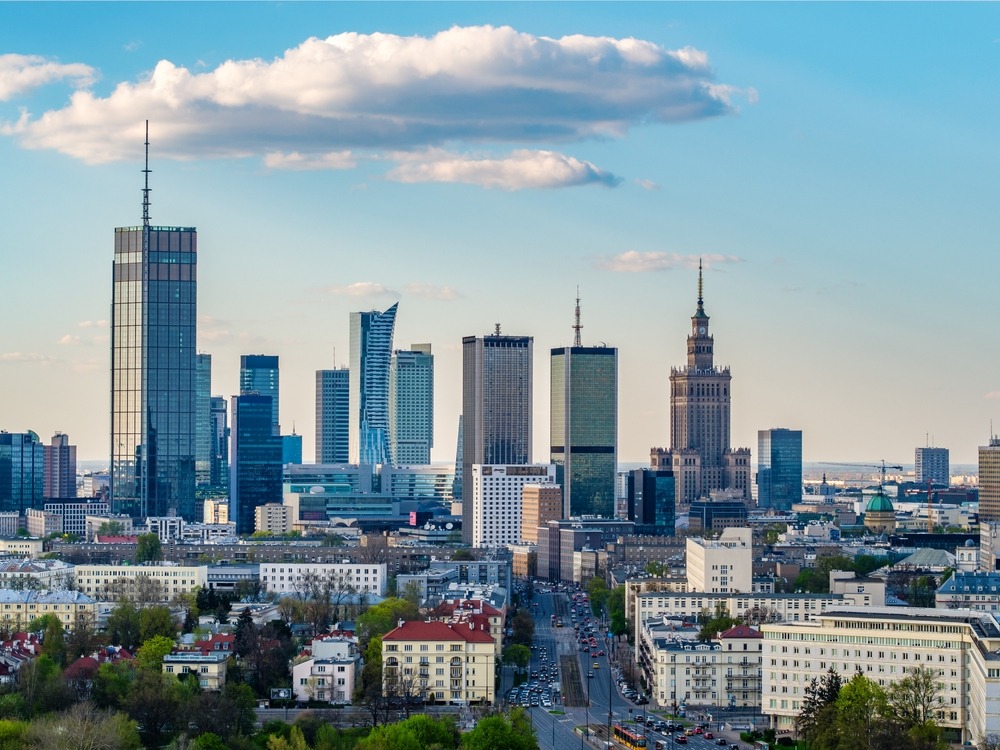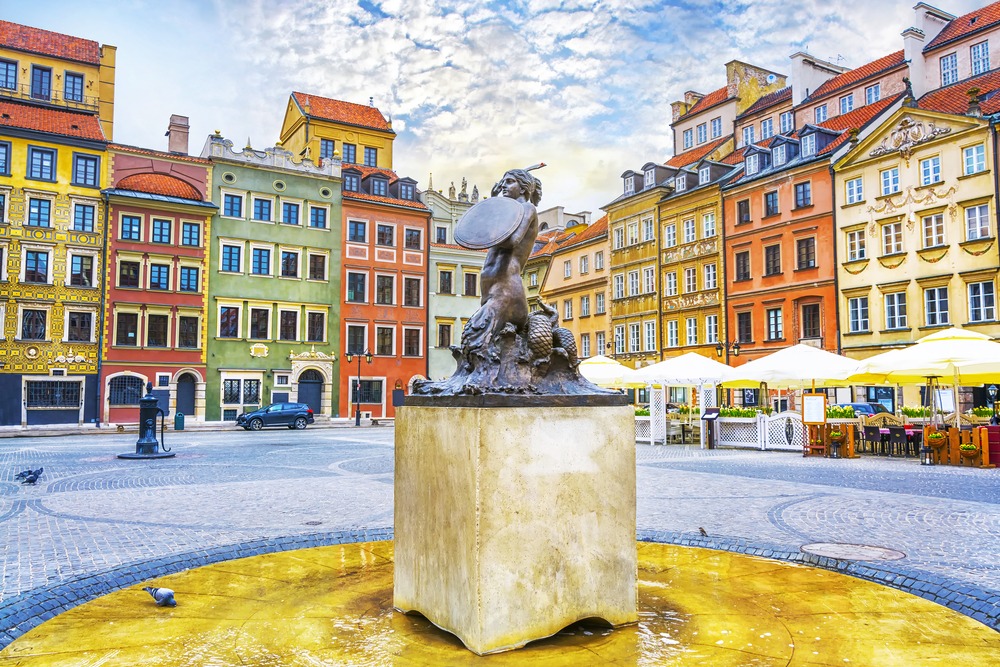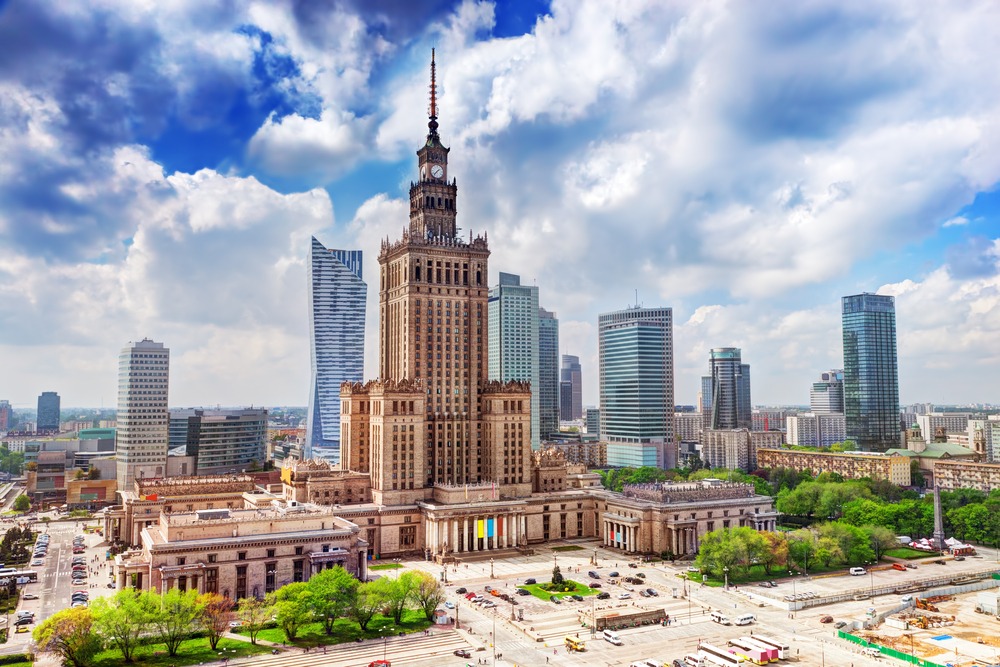Warsaw, Poland | History and the top 25 Attractions
The History of Warsaw, Poland
Warsaw, the resilient capital of Poland, stands as a powerful symbol of endurance, renewal, and cultural richness. Its earliest mentions date back to the late 13th century when it served as a minor settlement along the Vistula River. By the early 15th century, Warsaw rose in prominence, eventually becoming the seat of the Dukes of Mazovia. When the last Mazovian duke died without an heir in 1526, Warsaw was incorporated into the Polish Crown and began its transformation into a central hub of political life.
Warsaw’s fate shifted dramatically in 1596, when King Sigismund III Vasa moved the royal court from Kraków to Warsaw, designating it the new capital of the Polish-Lithuanian Commonwealth. Over the centuries that followed, Warsaw evolved into a vibrant center for art, science, education, and commerce, embracing the Enlightenment and becoming home to prestigious institutions such as the University of Warsaw and the National Theatre.
The partitions of Poland in the late 18th century saw Warsaw fall under Prussian and later Russian control, and the city became a focal point of resistance during uprisings against foreign rule. In 1918, Warsaw reclaimed its role as the capital of a newly independent Poland following World War I.
World War II brought unspeakable devastation. The Nazi occupation of Warsaw was marked by the tragic destruction of the Jewish community, the establishment of the Warsaw Ghetto, and the brutal suppression of the Warsaw Ghetto Uprising in 1943 and the Warsaw Uprising in 1944. In retaliation for the latter, Adolf Hitler ordered the systematic destruction of the city. By the war’s end, nearly 85% of Warsaw had been reduced to rubble.
Yet, Warsaw rose from the ashes. The post-war period saw the city meticulously rebuilt, including the Old Town, reconstructed with the help of paintings by Canaletto. Under communism, Warsaw became the epicenter of the Polish People’s Republic and later played a pivotal role in the fall of Soviet influence, especially with the rise of the Solidarity movement.

Today, Warsaw is a thriving European capital, balancing its tragic past with a modern, cosmopolitan identity. Its skyline blends baroque palaces with glass skyscrapers, while its streets echo with stories of resistance, rebirth, and cultural pride.
The Mermaid Origin Story
The Mermaid of Warsaw, or Syrenka Warszawska, is the beloved symbol and legendary guardian of the city. According to the most well-known version of the legend, a mermaid swam from the Baltic Sea up the Vistula River and paused near the shores of what is now Warsaw. Enchanted by the beauty of the area, she decided to stay. When local fishermen discovered her, they were mesmerized by her singing. However, a greedy merchant captured her, hoping to profit by displaying her in a cage. The fishermen, moved by her cries for help, freed her from captivity. In gratitude, the mermaid vowed to protect the city and its people. To this day, she is depicted with a sword and shield, standing watch over Warsaw as its mythical defender.

Her image appears prominently in the city’s coat of arms and statues throughout the city, most famously in the Old Town Square and on the banks of the Vistula River.
Top 25 Attractions in Warsaw, Poland
-
Old Town (Stare Miasto) – A UNESCO World Heritage Site, this meticulously reconstructed medieval district features cobblestone streets, colorful facades, and the historic Market Square.
-
Royal Castle (Zamek Królewski) – Once the seat of Polish monarchs, the rebuilt castle now houses art collections and historic chambers.
-
Łazienki Park and Palace – A lush 18th-century park with the neoclassical Palace on the Isle, amphitheaters, and the famed Chopin Monument.
-
Palace of Culture and Science – A gift from Stalin, this towering structure remains Warsaw’s tallest building and offers panoramic city views.
-
POLIN Museum of the History of Polish Jews – A cutting-edge museum chronicling the 1,000-year history of Jewish life in Poland.
-
Warsaw Uprising Museum – A moving tribute to the 1944 resistance effort, featuring immersive exhibits and original wartime artifacts.
-
Wilanów Palace – The “Polish Versailles,” a baroque palace and museum located on the outskirts of the city.
-
Copernicus Science Centre – A family-friendly, interactive science museum with hands-on experiments and planetarium shows.
-
Museum of Warsaw – Located in the Old Town, this museum offers insights into the city’s cultural and social evolution.
-
Krakowskie Przedmieście – A historic street lined with palaces, churches, and institutions, forming part of the Royal Route.
-
Nowy Świat Street – A bustling avenue full of boutiques, cafes, and historical architecture.
-
Saxon Garden (Ogród Saski) – One of the oldest public parks in Warsaw, featuring fountains, sculptures, and peaceful walking paths.
-
Powązki Cemetery – A revered burial ground where many of Poland’s most notable figures rest.
-
National Museum in Warsaw – Home to Polish and European art, including works by Jan Matejko and an impressive collection of ancient artifacts.
-
Zachęta National Gallery of Art – A contemporary art museum showcasing Poland’s leading modern artists.
-
Praga District – A revitalized area across the Vistula known for its creative energy, murals, and bohemian charm.
-
Neon Museum – Dedicated to preserving Cold War-era neon signs, offering a unique look at mid-century design.
-
PGE Narodowy (National Stadium) – A modern stadium hosting concerts, sports, and cultural events.
-
Warsaw University Library Rooftop Gardens – A green oasis above one of Europe’s most innovative libraries.
-
Vistula Boulevards – A lively riverfront area with bike paths, open-air bars, and floating cafes.
-
Chopin Museum – An elegant tribute to Poland’s beloved composer, located in the historic Ostrogski Palace.
-
Monument to the Ghetto Heroes and Umschlagplatz Memorial – Powerful monuments honoring Jewish resistance and deportation victims during the Holocaust.
-
Nożyk Synagogue – The only synagogue in Warsaw to survive WWII, still active and open to visitors.
-
St. Anne’s Church and Bell Tower – A neoclassical church with a climbable tower offering one of the best views of Old Town.
-
Keret House – Dubbed the world’s narrowest house, this modern art installation is an architectural curiosity nestled between two buildings.

Warsaw is a city of contrasts: regal and rebellious, historic and innovative. From its poignant memorials and palaces to its thriving cultural scene and green spaces, Warsaw rewards every visitor with a deeper understanding of Poland’s soul and spirit.

































